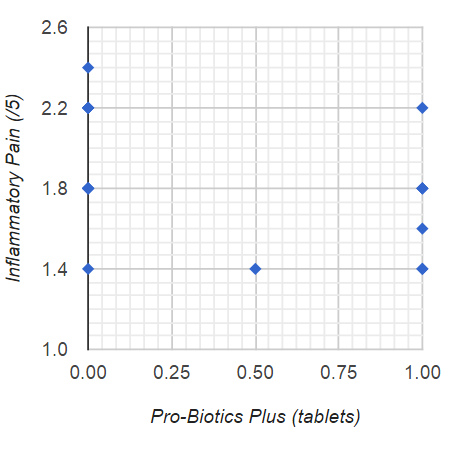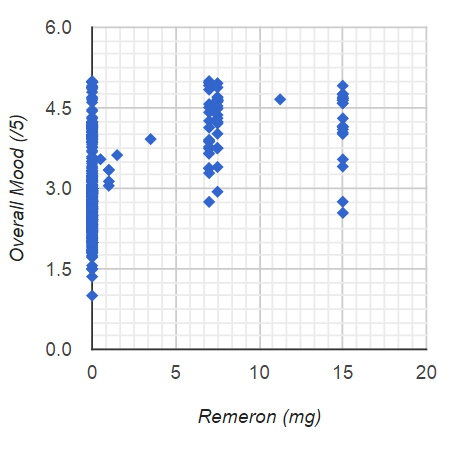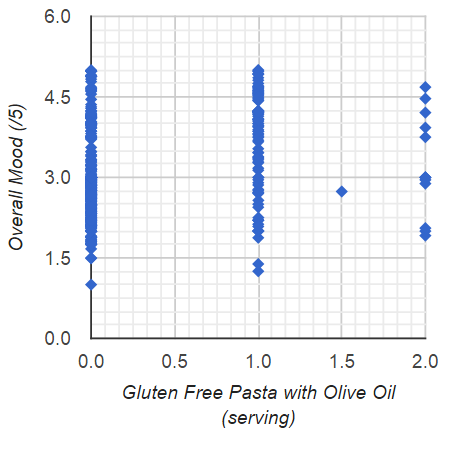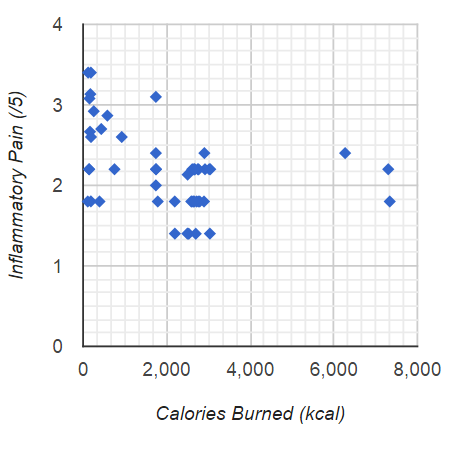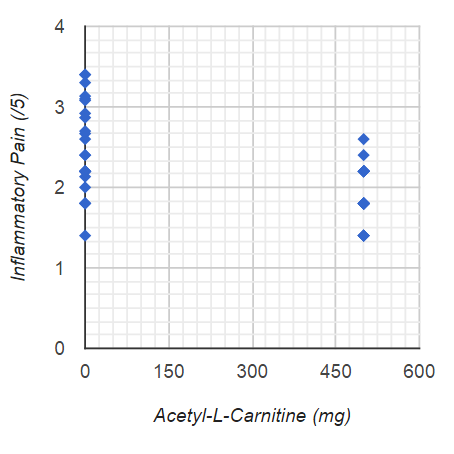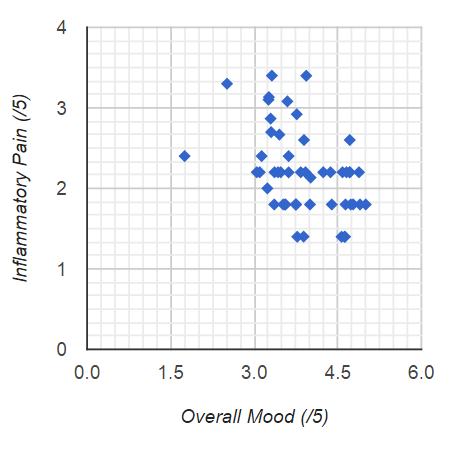Study Abstract
These data suggest with a high degree of confidence (p=0) that Systolic Blood Pressure (Vital Signs) has a moderately positive predictive relationship (R=0.376) with Overall Mood (Emotions). The highest quartile of Overall Mood measurements were observed following an average 132.82mmHgSystolic Blood Pressure. The lowest quartile of Overall Mood measurements were observed following an average 124.43mmHgSystolic Blood Pressure.
Study Background
In order to reduce suffering through the advancement of human knowledge, I have chosen to share my findings regarding the relationship between Systolic Blood Pressure and Overall Mood.
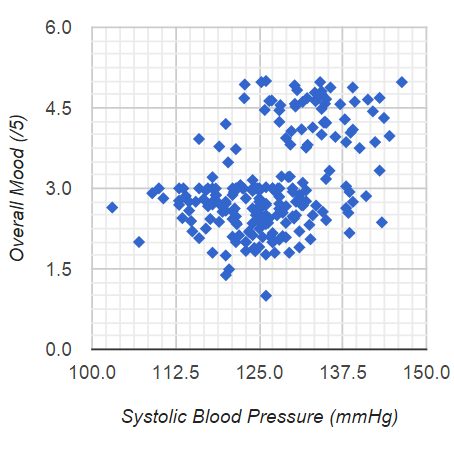 Study Objective
Study Objective
The objective of this study is to determine the nature of the relationship (if any) between the Systolic Blood Pressure and the Overall Mood. Additionally, we attempt to determine the Systolic Blood Pressure values most likely to produce optimal Overall Mood values.
Study Design
This study design is consistent with an n=1 observational natural experiment.
Data Analysis
It was assumed that 0 hours would pass before a change in Systolic Blood Pressure would produce an observable change in Overall Mood. It was assumed that Systolic Blood Pressure could produce an observable change in Overall Mood for as much as 7 days after the stimulus event.
Data Sources
The QuantiModo platform was used to aggregate data from the data sources.
Systolic Blood Pressure data was collect using: Withings.
Overall Mood data was collected using: Good Day Journal, MoodiModo, MoodiModo Ionic, MoodiModo Web, MoodPanda, Moodscope, Quantimo.do, QuantiModo, QuantiPress.
Significance Explanation
Using a two-tailed t-test with alpha = 0.05, it was determined that the change in Overall Mood is statistically significant at 95% confidence interval.
Study Limitations
As with any human experiment, it was impossible to control for all potentially confounding variables. The confidence in a causal relationship is bolstered by the fact that time-precedence was taken into account in all calculations. Furthermore, in accordance with the law of large numbers (LLN), the predictive power and accuracy of these results will continually grow over time. 227 paired data points were used in this analysis. Assuming that the relationship is merely coincidental, as the participant independently modifies their Systolic Blood Pressure values, the observed strength of the relationship will decline until it is below the threshold of significance. Furthermore, it will be very enlightening to aggregate this data with the data from other participants with similar genetic, diseasomic, environmentomic, and demographic profiles.
Study Results
This analysis suggests that HIGHER Systolic Blood Pressure (Vital Signs) generally predicts HIGHER Overall Mood (p = 0). Overall Mood is, on average, 14% HIGHER after around 132.82 Systolic Blood Pressure. After an onset delay of 168 hours, Overall Mood is, on average, -9% LOWER than its average over the 168 hours following around 124.43 Systolic Blood Pressure. 227 data points were used in this analysis. The value for Systolic Blood Pressure changed 1110 times, effectively running 555 separate natural experiments. The top quartile outcome values are preceded by an average 132.82 mmHg of Systolic Blood Pressure. The bottom quartile outcome values are preceded by an average 124.43 mmHg of Systolic Blood Pressure. Forward Pearson Correlation Coefficient was 0.376 (p=0, 95% CI 0.206 to 0.546 onset delay = 0 hours, duration of action = 168 hours) . The Reverse Pearson Correlation Coefficient was 0.433 (P=0, 95% CI 0.263 to 0.603, onset delay = -0 hours, duration of action = -168 hours). When the Systolic Blood Pressure value is closer to 132.82 mmHg than 124.43 mmHg, the Overall Mood value which follows is, on average, 14% percent higher than its typical value. When the Systolic Blood Pressure value is closer to 124.43 mmHg than 132.82 mmHg, the Overall Mood value which follows is 0% lower than its typical value.


